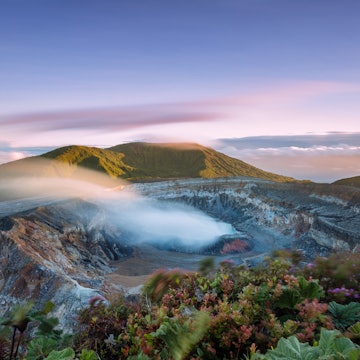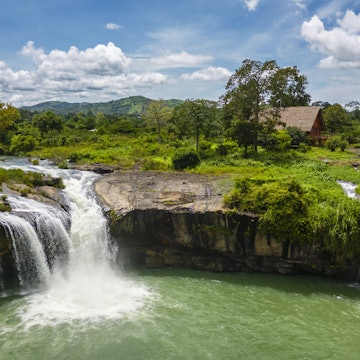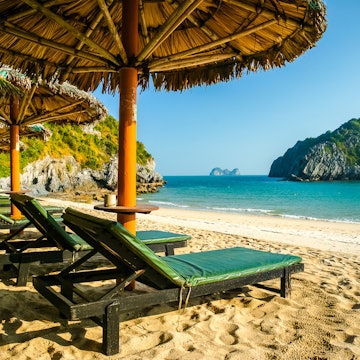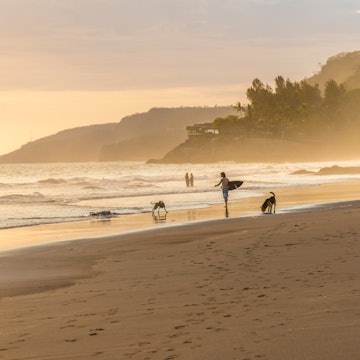
Fantastic beasts and where to find them: lesser-known wildlife worth watching
Sep 4, 2018 • 7 min read

Red Eyed Tree Frog Emerging From Between a Wet Leaf
Forget lions, leopards, elephants and the rest… the natural world is full of less famous but no less charismatic creatures, should you care to seek them out.
From a bird in drag to a frog with a hangover, these critters come from the cast of Lonely Planet's A to Z of Wildlife Watching, a wanderlust-charged guide to spotting some of the world’s most spectacular and unusual inhabitants.
So feast your eyes on these fantastic beasts, then hatch a plan to see them in the flesh.

Aardvark (Orycteropus afer)
What is it?
The name translates as ‘earth-pig’, but while true pigs are hoofed mammals, this secretive ant guzzler is in a group of its own. A night safari is essential if your heart is set on an encounter. You might meet one on its nightly rounds, where it uses senses of hearing and smell so acute that vision is almost redundant. That comical snout contains arguably the most complex olfactory apparatus in the animal kingdom, and the area of an aardvark’s brain dedicated to smelling is hugely enlarged. Having sniffed out an ant or termite mound, the aardvark uses sharp, hooflike claws to break in, then slurps up prey with its long, sticky tongue.
Where is it?
Several reserves in the South African Karoo offer specialist aardvark tours, aiming to track their resident aardvarks as they snuffle between ant or termite mounds.

Atlantic puffin (Fratercula arctica)
What is it?
With an appearance somewhere between cartoonish and handsome, Atlantic puffins in breeding colours are among the most popular seabird visitors to coasts of Newfoundland, Greenland, Iceland, Scandinavia and Britain. They breed in clifftop burrows or other crevices, favouring islands without ground predators. As summer wanes they return to the open sea, discarding their garish beak plates and eye ornaments and becoming unrecognisably drab.
Where is it?
Productive seas and the complex rocky northern and western coastlines of the British Isles are ideal for puffins, but large colonies are restricted to islands where adults and young are safe from terrestrial predators. There are good populations on Skomer in west Wales and at Hermaness, Sumburgh and Noss in the Shetland Isles. On the mainland coasts they favour cliff ledges over clifftop burrows, such as those at Bempton in North Yorkshire.

Bottlenose dolphin (Tursiops truncatus and T aduncus)
What is it?
This best known and loved of small cetaceans has become a celebrity in both popular culture and scientific circles, exhibiting intelligence and behaviour that continue to surprise. They are social, self-aware, highly communicative, playful and capable of tool use, teamwork, mimicry and intense curiosity. Combined with extraordinary athleticism, these traits make them a joy to watch – and a highly achievable must-see on any bucket list.
Where is it?
Bottlenose dolphins are found in warm and temperate seas around the world. What was until recently regarded as one species was split in the 1990s into the common bottlenose found in Atlantic and offshore waters, and the Indo-Pacific species, generally associated with coasts and estuaries. Hybrids almost certainly occur in areas where the two species meet, among them the Burrunan dolphin found in parts of Victoria, Australia and recognised as a species in 2011.
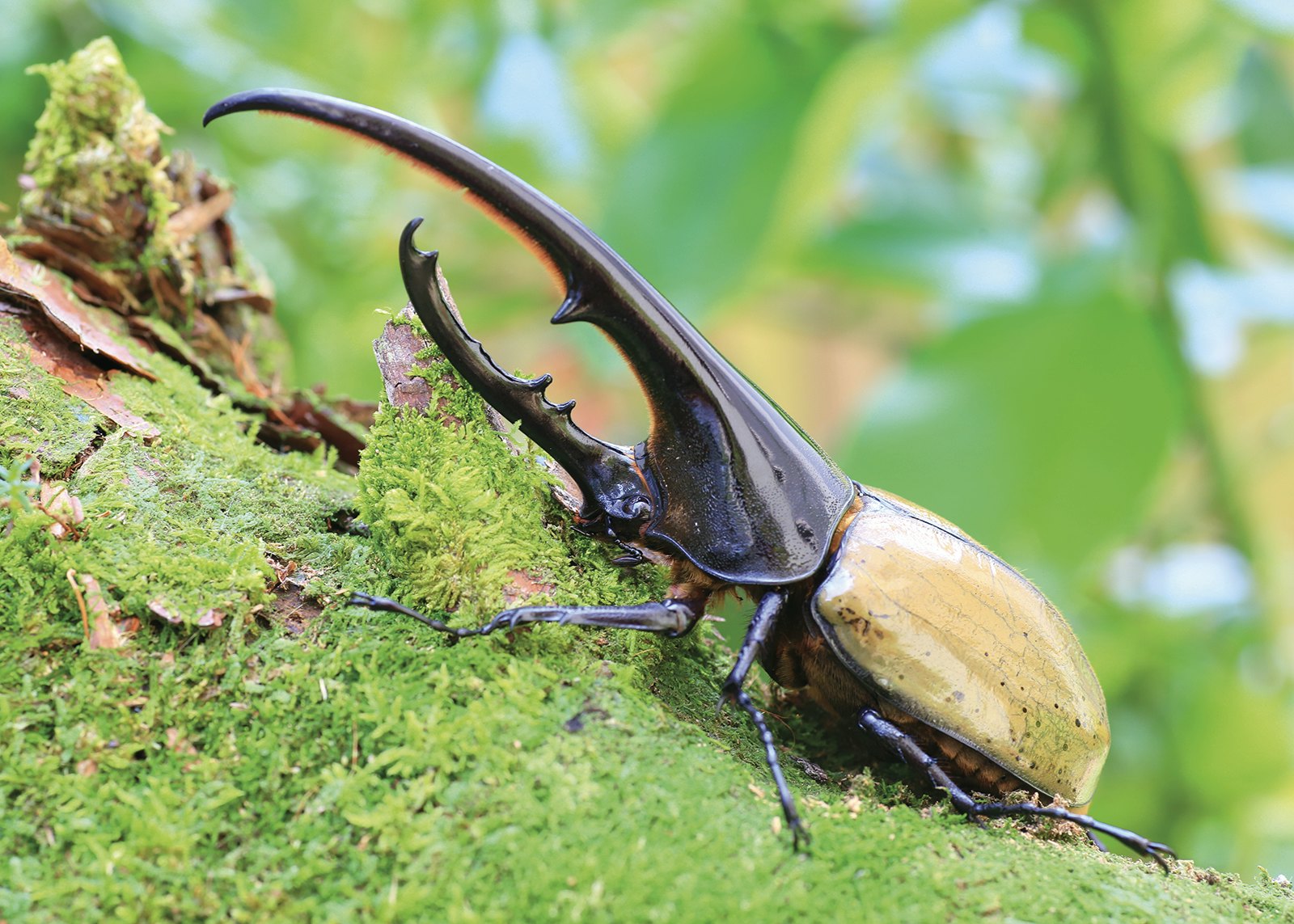
Hercules beetle (Dynastes hercules)
What is it?
With males exceeding 15cm, including their prodigious horns, this is the largest beetle on Earth. The horns are actually outgrowths of the exoskeleton – one sprouting from the head and a larger one from the pronotum, the shield-like covering of the thorax. The horns interlock with those of rival males during no-holds-barred territorial wrestling matches. The combatants have little to lose because even the most magnificent are short-lived, with less than six months in which to procreate. The larvae, which hatch and develop on a diet of dead wood, can weigh more than 100g.
Where can I see it?
Costa Rica is a must on any entomological world tour. In Tortuguero National Park on the Caribbean coast, you stand a good chance of finding both the Hercules and the almost equally enormous elephant beetle. Search at ground level, in and around fallen dead wood.

Leafy sea dragon (Phycodurus eques)
What is it?
This exquisite, eccentric fish is an easy watch for divers and snorkellers, once you’ve located one. The seaweed-like lobes of skin for which the species is named provide remarkable camouflage, allowing it to avoid the attention of both predators and prey. It drifts about, relying on the shelter of kelp beds to avoid being swept away by even moderate currents, all the while sucking up tiny crustacean prey with its nozzle-like mouth. Bony skin plates keep the body rather inflexible and all the propulsion for swimming comes from undulations of the delicate, near-transparent dorsal fin.
Where is it?
'Leafies’ are found only on southern and extreme southwestern coasts of Australia. A local dive guide will boost your chances of a sighting and several operators run tours off the Yorke Peninsula, Rapid Bay, Victor Harbour and other sites around Adelaide.

Red squirrel (Sciurus vulgaris)
What is it?
The species immortalised by Beatrix Potter as irrepressible delinquent Nutkin is these days more often painted as a victim, following its extinction from most of its English and Welsh range. The loss is attributable to the spread of introduced American grey squirrels and in particular to the virus known as squirrel pox – fatal to reds but carried by grey with no ill effects. Introduced greys are also spreading from northern Italy across the Alps.
Where is it?
The native squirrels of Germany’s Black Forest are as yet untroubled by introduced greys, and easy to see, especially in areas where they are regularly fed. The popular waterfall walk at Triberg is an exceptionally reliable place for sightings. In the UK, the Lake District and Kielder Forest in Northumberland boast good populations on the frontline of the battle to hold back the grey tide.

Red-eyed tree frog (Agalychnis callidryas)
What is it?
This gaudy amphibian might have been designed by an ad agency as poster-species for Central America’s rainforests, but its eye-catching appearance serves a far more life-and-death function than that; the combination of red, green, orange and blue is strident enough to dazzle potential predators. The effect might be momentary as the hunter adjusts to what it is seeing, but that moment is enough to enhance the frog’s chances of escape.
Where is it?
Costa Rica is undisputedly the frog capital of the world, with 133 native species. Of these, 54 have been recorded within the Veragua Rainforest on the Caribbean coast, including the almost ubiquitous red-eye.

Saltwater crocodile (Crocodylus porosus)
What is it?
The world’s largest living reptile can exceed 6m in length and weigh well over a tonne. ‘Salties’ inhabit both fresh and salt water and are able to travel long distances by sea. Despite their prehistoric appearance they are superbly adapted animals – true apex predators, capable of killing and eating virtually any other animal they encounter in the water.
Where is it?
Salties can be seen in much of Southeast Asia and Oceania, and thrive in Australia’s Northern Territory, in particular in the Adelaide, Mary and Daly river systems near Darwin. Crocodile tours have been running on the Adelaide River since the 1970s, and the stars of the show are individuals habituated to tour boats, who leap for meat dangled from poles by experienced tour guides. Fatal attacks on humans are regular, though not common, and almost always take place in shallow water, where the animals can lurk unseen.

Walrus (Odobenus rosmarus)
What is it?
This huge Arctic seal-cousin hunts by touch using its moustache of wiry bristles and feeds by suction powerful enough to open large clams. The tusks, too long to be any use in feeding, serve as grappling hooks when the walrus pulls itself from the water onto ice floes, giving rise to the scientific name odobenus, meaning ‘Toothwalker’.
Where is it?
The remote sites favoured by walrus make them an expensive bucket list tick, but haulouts such as those on Cape Seniavin and Round Island in western Alaska are well serviced by tour operators, with options for single- or multi-day trips by air from Anchorage. In Europe, a high-summer trip to the abandoned mining settlement of Pyramiden on Spitsbergen, Svalbard, offers good opportunities to see the slightly smaller Atlantic variety.
Check out adventure tours for every traveller from our trusted partners.
https://shop.lonelyplanet.com/products/a-z-of-wildlife-watching-1









